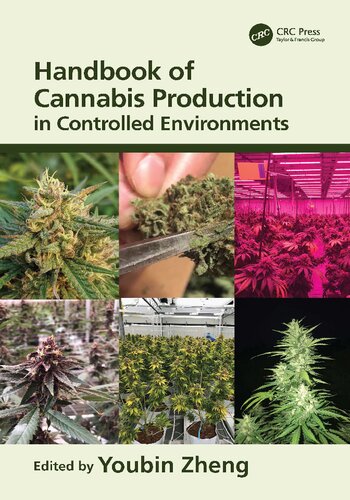Product desciption
Handbook Of Cannabis Production In Controlled Environments Youbin Zheng by Youbin Zheng 9780367713546, 0367713543 instant download after payment.
Cannabis sativa, commonly called cannabis or marijuana, is a plant that we have used for thousands of years for many different purposes, including medical, recreational and religious activities, as well as a source of food and fibers. In modern history, cannabis has transitioned from a legal and widely used plant to an illegal crop, but many countries and regions are now reverting toward legalization again, such as Canada and some U.S. states. During these decades of prohibition, there have been many advancements in horticultural science and technology, especially in controlled environment plant cultivation, but most were not been applied or tested on cannabis. Recently, there has been increasing demand for cannabis products, such as dried inflorescence and a variety of extracts and processed products. When used as medicine or for recreational purposes, cannabis is most often
produced in controlled environments (e.g., greenhouse and indoor growing rooms) to ensure consistent high quality.
As a result, there are burgeoning operations in controlled environment cannabis cultivation in regions where cannabis is legalized. These operations—and individual growers who cultivate cannabis for personnel consumption—need scientific information on how to cultivate cannabis more effectively and efficiently. People have accumulated enormous amounts of knowledge and experience on how to cultivate this plant in small scale during the period when cannabis was illegal, but there has been very little formal research to verify many of these practices. Many legal operations utilized talent from the legacy market at the beginning of their operations, and these individuals
brought valuable knowledge and experience with them, making significant contributions to the initiation and establishment of legal operations. However, since legal operations tend to be larger and are heavily regulated, there are issues of scaling up. Also, due to the high value and history of this plant, there are m


